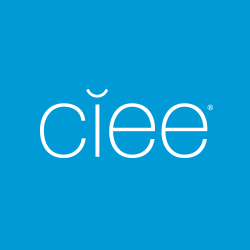With H-1B Visa News, J-1 Visas Could Be a Smart Alternative
In September 2025, President Donald Trump passed an executive order requiring employers to pay a $100,000 fee for hiring skilled international workers through the H-1B visa program. This program allows employers to fill specialized positions when there aren't enough American workers available.
With this buzz around the H-1B visa news, it's a perfect time to explore another option for international talent acquisition: the J-1 visa through the U.S. Department of State's BridgeUSA program. Before diving into the J-1 visa, let's first understand the context surrounding the H-1B visa.
What Does H-1B Visa Mean?
According to the U.S. Department of Labor, an H-1B visa allows U.S. employers to temporarily hire international workers for specialty occupations – roles that require at least a bachelor's degree and specialized knowledge in fields like technology, engineering, medicine, or finance.
Employers must pay H-1B workers wages equal to what similarly qualified U.S. workers earn, protecting both American workers and foreign visa holders from wage exploitation.
A total of 85,000 H-1B approvals per year have been issued annually for the past two decades. Amazon, Microsoft, Meta, Apple, and Google are half of the companies in the top 10 of H-1B application approvals.
What are Some Common H-1B Visa Jobs?
About 65% of H-1B visa jobs are related to computers, jobs like data communications, data networks, technical support, and programming.
Other roles include:
- Architecture, engineering, and surveying (9.4%)
- Education (6.2%)
- Administrative specializations (5%)
- Medicine and health (4.4%)
- Mathematics and physical sciences (2.7%)
These jobs and industries often find themselves without enough qualified talent. In turn, they’ve come to rely on international individuals to fill the gaps through H-1B.
Why Employers Should Consider a J-1 Visa Applicant
If the H-1B visa program fees and uncertainty are making you think twice about your international hiring plans right now, start looking in a different direction – like toward the J-1 visa.
The H-1B visa allows people to stay in the U.S. for three years, with the possibility of an additional three-year extension. In comparison, the nonimmigrant J-1 visa gives interns up to 12 months in the country and trainees up to 18 months. While the program lengths are quite different, employers may be surprised to learn that J-1 visas don’t come with the $100,000 petition fee. Hiring a BridgeUSA Intern or trainee is a cost-effective way to bring international talent to your business – $0 in petition fees.
What are the additional benefits of the J-1 visa versus the H-1B visa?
- Faster processing: J-1 visas generally have faster processing times than H-1B visas. (J-1 visas can take a few weeks to a couple months, while H-1B visas may take up to a year to be finalized.) This means you can attract, recruit, and retain talent even quicker.
- No labor certification requirement: H-1B visa programs require employers to complete the Labor Condition Application (LCA), which can be a time-consuming and complex process. It is not a J-1 visa requirement.
- No annual cap: Unlike the H-1B visa, which has an annual cap, there is no cap for J-1 visas, making it a more accessible option for many applicants.
How to Host International Interns on a J-1 Visa
The easiest way to start the process is to reach out to a J-1 visa sponsor you can trust. CIEE: Council on International Educational Exchange – the oldest and largest sponsor organization – can not only walk you through the process but help match you to top talent with its free hiring services.
For more than 50 years, CIEE BridgeUSA has welcomed over 1.2 million participants from 140+ countries. Each year, CIEE supports more than 30,000 participants who come to live, work, and learn in America, as well as the 4,000 U.S. businesses who host them.
Speak with a CIEE team member today when you fill out the form to get started.
Interested in learning more about interns who come to the U.S. on a J-1 visa? Get information about the CIEE BridgeUSA Intern and Trainee programs.

